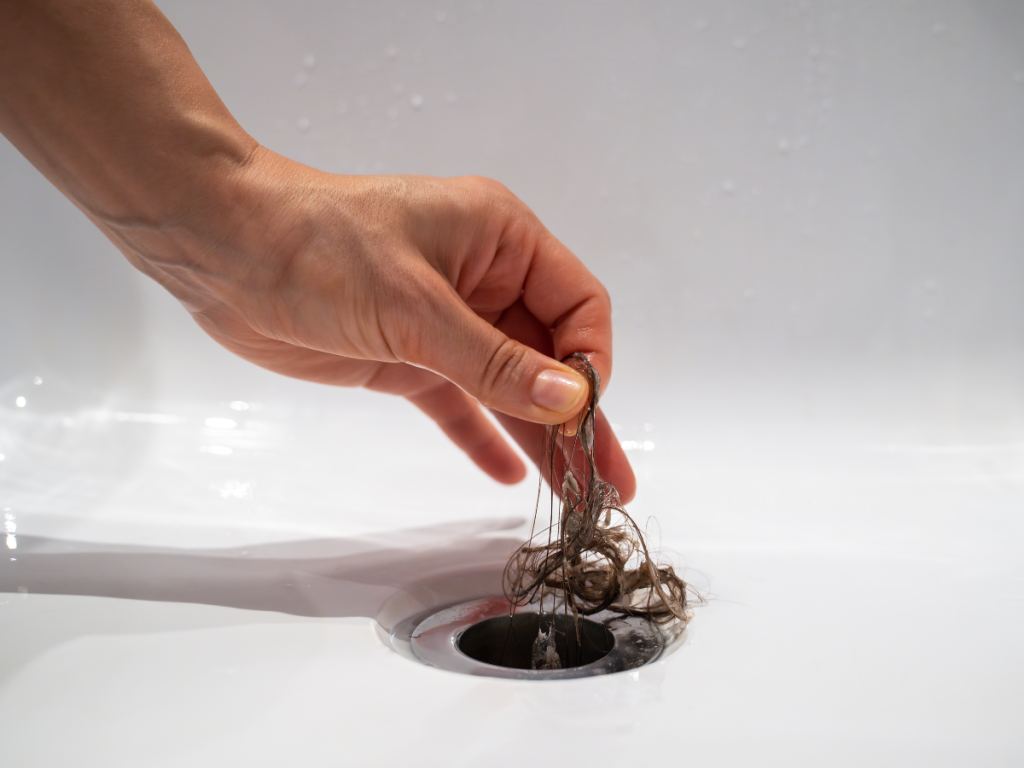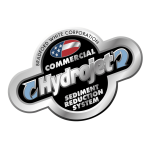There’s nothing quite like a relaxing shower to wash away the day’s stresses—until you notice the water pooling at your feet, a sign of a clogged drain. Often, the culprit is a buildup of hair, stealthily accumulating over time.
This practical guidance will provide tips to tackle this hairy nuisance head-on to get rid of blockages and restore your drains.
Let’s dive into some simple yet effective methods to keep your drains free-flowing.
Causes of hair clogs in drains
Hair clogs can turn from a minor inconvenience into a significant nuisance if not addressed in time. But what exactly causes these plumbing predicaments? Here are some common culprits:
- Natural hair loss: It’s completely normal to lose hair each day, and many of those strands make their way down the drain during showers
- Soap and product buildup: When hair mixes with soap residue and various grooming products, it can form a sticky substance prone to clinging to the insides of pipes
- Heavy pipe usage: Bathrooms with substantial use, such as those in a family home, are more likely to experience clogs thanks to the increased amount of hair and product making its way into the drains
By understanding these common factors, we’re better positioned to address—and prevent—those dreaded clogs.
Prevention tips for hair clogs
Preventing hair clogs doesn’t have to be a chore. By incorporating a few simple habits into your daily routine, you can keep your drains clear and free-flowing. Here’s how:
- Use a drain catcher: Easily the most straightforward solution, a drain catcher effectively traps debris before it enters your pipes. Choose one that fits snugly over the drain, and remember to clean it regularly
- Brush before showering: Give your hair a good brush before stepping into the shower. This habit helps to remove loose strands that would otherwise end up down the drain
- Limit the use of heavy conditioners: Thick hair care products can contribute to clogs by binding the hair together inside your pipes. Opt for lighter conditioners
- Regular maintenance: Weekly, flush your drain with hot water to clear away any beginning buildups. For an extra cleaning boost, consider adding a mixture of vinegar and baking soda before the hot water rinse
- Professional drain cleaning: For stubborn clogs, it might be wise to call in the professionals. Regular professional cleaning can prevent severe clogs and identify potential issues before they escalate
By following these proactive steps, you can minimize the risk of clogs and keep your plumbing in top condition.
Common methods for hair clog removal
There are several reliable methods to tackle this problem, whether it’s natural solutions, chemical aids, handy tools, or DIY fixes. Remember to wear protective gloves regardless of the method you choose.
Natural solutions
- Baking soda and vinegar: Begin by emptying a cup of baking soda into the drain, then add a cup of distilled white vinegar. Allow the mixture to react and fizz. Once the fizzling settles, rinse the drain with boiling water
- Boiling water: Sometimes, a simple pot of boiling water can do the trick to loosen the hair and clear minor clogs
Chemical cleaners
- Liquid drain cleaners: There are many products available designed specifically to dissolve hair clogs. Be sure to follow the instructions carefully, as these chemicals can be harsh
Tools for clog removal
- Plunger: A plunger can often dislodge clogs that are not too deep in the pipes
- Plumber’s snake: This flexible cleaning tool can reach deep into the drain to remove clogs that are beyond the reach of other methods
- Drain claw: Small and inexpensive, this tool can be effective at grabbing and pulling out clumps of hair from the drain
Using these methods should help you clear your pipes, but if you find the clog is too tough to handle on your own, it may be time to call in a professional.
When to call a professional plumber
Sometimes, a clog may prove too stubborn for your typical home remedies or over-the-counter solutions. When you encounter this, it’s time to call in the professionals to ensure your plumbing system is handled correctly.
Keep an eye out for the following indicators that you need plumbing services (that might include draining cleaning).
Multiple clogged drains
If more than one drain is clogged at the same time, it can signify a blockage deep within your main line, which requires professional tools and skills.
Recurring clogs
When a drain consistently re-clogs after you’ve attempted to clear it, it’s likely that the clog was never fully removed, and a professional can ensure it’s cleared out for good.
Water backing up
Water backing up into other drains when you use plumbing fixtures and appliances (like your washing machine or shower) suggests a serious blockage that standard plunging or snaking won’t resolve.
Unpleasant odors
Foul odors coming from your drain could mean a deep-set clog or decay inside your pipes that needs to be professionally addressed.
Ineffective solutions
If you’ve tried multiple methods, like plungers, drain cleaners, and home remedies, without success, it’s time to call a professional to prevent further pipe damage.
Water flooding
In worst-case scenarios, a severe clog can lead to water or sewage backing up into your home. In these instances, immediately contact a professional to protect your property and your health.
Call Plumb-Tech for your plumbing needs!
If you find yourself facing any of these situations, don’t hesitate to contact Plumb-Tech. Our certified technicians are ready to tackle the toughest of clogs and provide you with peace of mind.
Contact us now!





